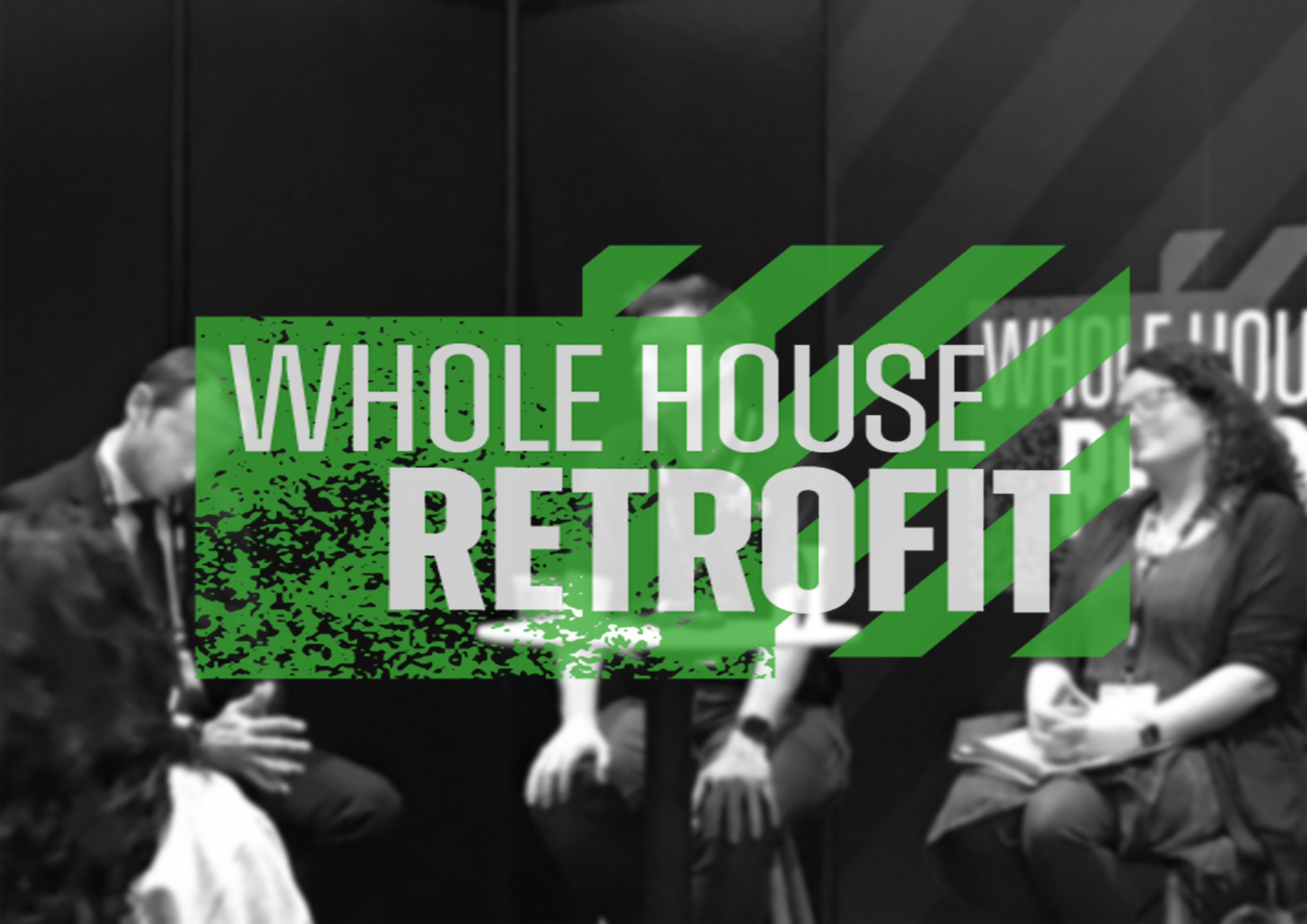Bridging the Retrofit Gap: Climate, Culture, and Infrastructure | Future Build 2022 | International Women’s Day
Posted on 08-03-2022
Future Build 2022 in London was an inspiring event. While the majority of discussion concerned homeownership tenures, the wealth of expertise available reminded me why housing retrofit is a vital and worthy goal. I was reminded of why my research project to retrofit social housing is an urgent modern problem.
Interestingly, there was a noticeable divide between speakers promoting social value in retrofit (mostly women) and purely technical solutions to decarbonising homes (predominantly men). One of the few mixed-gender panels I attended was the Big Debate: Should we use RdSAP (Reduced Data Standard Assessment Procedure) in retrofit? Andrew Parkin of Stroma said yes, RdSAP is historical and therefore has a plethora of past data for comparison. It is also future proof; an API (application programming interface) with the BRE Group’s ‘Appendix Q database’ is being developed to migrate external information and data sets into RdSAP. Marion Lloyd-Jones for Manchester Co-op ‘People Powered Retrofit’ said no, strongly arguing that: retrofit should be for the people with a focus on heat loss reduction, and that local knowledge should be amplified because EPC ratings are simply incomparable between varying regional climates.
I am writing this post on International Women’s Day. A day that should serve as a reminder that: women are still not paid equally; domestic and sexual violence, which disproportionately affects women, has increased during the covid-19 pandemic; and women remain responsible for the majority of domestic labour. The world of retrofit and decarbonisation must remember that social value is as important to sustainability as energy efficiency. Social retrofit should be encouraged in tandem with environmental retrofit in order to sustain the health and wellbeing of both the people and the planet.
Here are my major takeaways:
Climate
- The Intergovernmental Panel on Climate Change (IPCC) report cemented the UKs carbon target to limit global warming to below 1.5°C, fuelling the Net Zero Strategy – a net zero target by 2050.
- The National Retrofit Strategy by the Construction Leadership Council (CLC) modelled the work required to retrofit the nation’s homes by 2040, a decade earlier than government targets. We can and SHOULD speed up the green transition – particularly in the midst of the current fuel crisis exacerbated by the conflict in Ukraine.
- “Decarbonising Homes” was a widely used slogan at Future Build, used to promote technical solutions to retrofit. Air source heat pumps were frequently discussed, a questionable cure-all solution, gaining popularity.
Culture
- Skill shortages are a huge obstacle to low-carbon retrofitting – no one seems to know what to train people in yet, and in-house retrofit employees are relatively new because employers worry that post-training, they will leave. A possible solution to this is to borrow apprentices from within the construction sector to upskill.
- The Public Services (Social Value) Act 2012 declares the minimum weighting on all government projects that should be applied to social value is 10%.
- The Social Housing Decarbonisation Fund has pledged £3.8 billion by 2030. How to access the funds and get residents on board:
- Have a clear message for social value and EDI (Equality, Diversity, and Inclusion), and get it right!
- Prepare the project into a ‘package’ to send with your funding bids.
- Resident engagement in social housing retrofit should occur at multiple stages: pre-bid, mobilisation, and post occupancy (POE).
- Engage non-profit organisations to interact with residents, independent from local authorities and housing associations (aka tenants’ landlords).
- Wellbeing outcomes from retrofit and a reduction in fuel poverty include increased physical health, increased mental health, improved educational outcomes, and decreased levels of crime. Quantifying the cost savings of these outcomes on public services such as the NHS could find retrofit leads to a return on investment.
Infrastructure
- Digital Twins are a necessity to improve social housing. Tenants can flag an issue online (accessibility should be maintained by Housing Associations and Local Authorities for those without access to digital twins) and modelling social housing typologies can determine the impact of energy efficiency improvements.
- Complete dwelling assessments as soon as possible – defects must be fixed before retrofit can begin.
- While new build development continues to benefit from 20% price reductions, according to Sam Balch – Policy Advisor for the Department of Business, Energy, and Industrial Strategy (BEIS) – VAT exemptions for retrofit remain under consideration.
- Homes England have updated the Building Regulations (BR) as follows: Part L – 31% reduction in emissions compared to current standards, Part F – increased ventilation in new dwellings, Part O – overheating in new residential buildings, and Part S – electric vehicle charging points. This is in preparation for the introduction of the Future Homes Standard (due 2025). It will demand homes produce at least 75% less carbon emissions than currently allowed under the BR.
- SAP 10.2 will be released later this year, and RdSAP will consequently improve. The output of SAP is EPC ratings, which are highly controversial, at times unreliable, and often not comparable. But changes are coming to RdSAP including improved air tightness measurements and ventilation risk assessments. I believe RdSAP should produce new sets of comparable outputs alongside EPC ratings.
I encountered many illuminating approaches from Future Build – clearly there are overlaps between climate, culture and infrastructure – but these strands should be brought into closer dialogue with one another. My project aims to bridge this gap.
References
(BEIS) Department for Business, E. & I. S. (2021). Social Housing Decarbonisation Fund: Competition Guidance Notes.
Cabinet Office. (2021, March 29). Guidance: Social Value Act: information and resources. GOV.UK. https://www.gov.uk/government/publications/social-value-act-information-and-resources/social-value-act-information-and-resources
Department for Levelling Up, Housing and Communities and Ministry of Housing, Communities & Local Government. (2021, December 15). Collection: Approved Documents. GOV.UK. https://www.gov.uk/government/collections/approved-documents
IPPC (Intergovernmental Panel on Climate Change). (2021). Climate Change 2021: The Physical Science Basis. In Climate Change 2021: The Physical Science Basis. Contribution of Working Group I to the Sixth Assessment Report of the Intergovernmental Panel on Climate Change.


